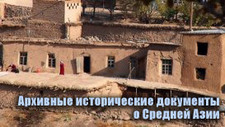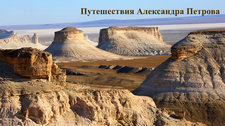Вы здесь
Karkaraly nature park.
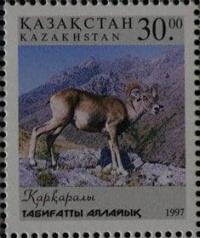
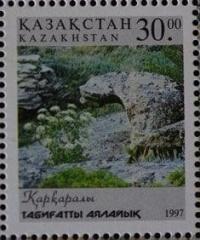
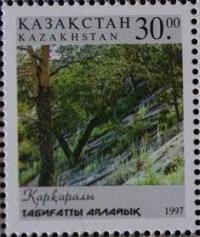
Tours to Karkaraly park.
“Karkaraly Mountains have exactly the same character as the Bayan-Aul Mountains: they also consist of pink granite boulders clad in moss and gray lichen, and their main range is covered with pine forest. The so-called Bassein (Basin) and the Devil's Lake (Chertovo) are particularly renowned for their beauty in the mountains. The former is located four kilometers from Karkaraly, the latter, I believe, five. Both can only be reached on foot or horseback. The road to both the Bassein and the lake winds through lush gorges, lined with pine and birch forests, rosehips, raspberries, and tall grass. The ascent to the large mountain where the Bassein is located is via a stone stream bed, surrounded by high granite walls. The climb is quite steep in places. The walls at the summit of the mountain terminate in a huge rectangular box of solid granite filled with water; this is the Bassein (Basin”).
N. Ya. Konshin "From Pavlodar to Karkaraly." 1901.
Excursions and Walk Karkaraly park.
Karkaraly National Park - guide, legends, and routes.
Karkaraly National Park is located in eastern part of Kazakh Uplands, in Karkaraly Mountains, within Karkaraly District in eastern Karaganda Region. Karkaraly Park is one of the most striking and accessible natural complexes in Central Kazakhstan.
Granite ridges, pine forests, forest-steppe valleys, clear lakes, and traces of ancient cultures make this unique place: nature, history, and folk legends meet here. Karkaraly Mountains - the heart of the steppe of Kazakhstan. The Karkaraly Mountains are an ancient granite massif that rises majestically amid the vast steppes of Central Kazakhstan.
Their peaks, crowned with pine and birch forests, form a natural oasis rare in this part of the country. These rocks are over 300 million years old: the granites, gneisses, and schists that make up the mountains belong to the Hercynian orogeny.
Over millennia, wind and water have carved fantastic rock shapes here, reminiscent of people, animals, and mythical creatures. The Karkaraly Mountains stretch for tens of kilometers, and their highest point, Kokshetau Peak, reaches 1,403 meters above sea level.
Numerous valleys and gorges conceal lakes, springs, caves, and archaeological sites. Scots pine, birch, aspen, and rowan grow on the slopes, while the undergrowth is covered with currants, rose hips, and barberries. Wildlife includes marals, roe deer, wolves, lynxes, and over 100 species of birds.
Karkaraly is not just a mountain range, but a symbol of the region's ancient history. Here, traces of the Bronze Age, Turkic nomads, and Kazakh tribes merge. The park boasts over 300 archaeological sites. Modern tourists take routes to the Three Caves, Lake Shaitankol, Zhirensakal Peak, the Shankoz Mountains, and the Kent Massif.
In the Karkaraly Massif, the Tarkezen and Akpet, Buguly and Air ranges diverge at an angle. The individual peaks include Komsomol Peak (1,403 meters above sea level), Shankoz (1,360 meters above sea level), Buguly (1,323 meters above sea level), Koktobe (1,254 meters above sea level), and several others of lesser elevation.
The area is characterized by a wide distribution of river valleys, natural meadows, lake basins, and areas of gently rolling hills. The climate throughout the entire small hills is generally sharply continental, with an anticyclonic weather regime
haracterized by harsh winters, cool summers, significant daily and annual temperature fluctuations, and frequent droughts, dry winds, and cloudy days throughout the year.
The following animal species are listed in the Red Book: argali, golden eagle, gray partridge, common crane, demoiselle crane, as well as great spotted woodpecker and black stork. Endemic, rare, and endangered plants of the region listed in the Red Book include marshmallow, karkaralinsk barberry, pallas's honeysuckle, common hypericum, zalessky feather grass, papaver slender, red fescue, large-flowered uniflora, smooth wormwood, karkaralinsk wheatgrass, drooping tulip, male rose, and orchis fuchsiana.
Within the national park, argali live primarily in the Sarmantai and Karagash mountains of the Kent regional branch, with visual observations indicating a population of 14 individuals. Data is being collected within the national park as part of the Chronicle of Nature. Educational and sightseeing tourism, as well as sports and wellness tourism, will be the priority and promising forms of active recreation in the national park.
A map of the state national park has been compiled for the development of recreational activities and ecotourism.
Brief information about Karkaraly National Park.
Karkaraly National Park was established in 1994.
Karkaraly State National Park is located in the eastern part of the Karaganda
region, 178 kilometers from the regional capital, Karaganda. The area of the Karkaraly State National Park is 90,300 hectares. The national park borders the following farms: Bakhtinsky Agricultural Production Cooperative, Kasym Amanzholov Agricultural Cooperative, Dzhambul Agricultural Cooperative, Nurken Abdirov Agricultural Cooperative, Tokhtar Aubakirov Agricultural Cooperative, and Martbek Mamyrayev Agricultural Cooperative (Kyrgyzstan).
The land plots of the KZV College, a subfarm of the Karagaily Mining and Processing Plant, and the boarding school and town of Karkaraly.
National park's territory is divided into following functional zones:
1. Protected area.
2. Reserved area.
3. Regulated, tourist, and recreational use zone.
4. Limited and traditional economic activity zone.
The national park's territory belongs to the second category of specially protected natural areas with the status of a nature conservation and scientific institution of national significance. It is intended for the preservation of biological and landscape diversity, as well as the use of unique natural complexes and sites of the State Nature Reserve Fund (SNRF) with special ecological, scientific, historical, cultural, and recreational value for nature conservation, educational, scientific, tourist, and recreational purposes.
Landscape: granite ridges of the Karkaraly Mountains, individual Kent, Shankoz, and Bugaly massifs; forests (mainly pine and birch), wide forest-steppe valleys, and several high-mountain lakes.
Climate: continental – cold winters, warm summers; the best time for tourism is from late May to September.
Karkaraly-Kent mountain range consists of five relatively isolated mountain groups: Buguly, Shankoz, Maten, Airtau, and Kent. The Karkaraly Mountains and the Kent massif have a noticeable landscape asymmetry: their northern slopes are steeper and noticeably richer in springs and vegetation than their southern and western slopes.
They form ridges that form a network of rocky ridges and peaks separated from each other by deep gorges, intermountain valleys, and gently rolling plains.
Natural sights of Karkaraly National Park.
Lake Shaitankol – "Devil's Lake" – and its legend.
At an altitude of 1,133 meters above sea level, in the Bugaly Mountains, lies Lake Shaitankol, one of the most mysterious places in the Karkaraly Nature Park. Its name translates as "devil's lake," and it fully lives up to its dark charm. According to legend, two young men once lived here, both in love with the same girl.
Unable to share her heart, they fought on the shore and drowned together, after which the water turned leaden, becoming the "devil's lake." Old-timers swear that on quiet evenings, the echo of distant voices and splashes can be heard over the surface of the water - as if someone were calling from the bottom.
For travelers, the lake is a place of contemplation and inspiration. A convenient trail about 3 km long leads here from the town of Karkaraly; the journey takes about an hour. Along the way, panoramic views of the mountains and dense pine forests open up.
The shores of Shaitankol are rocky, surrounded by pine trees and currant bushes. The best time to visit is early morning and sunset, when the water becomes mirror-like, reflecting the purple sky.
Three Caves (Cave of Primitive Man).
The Maliksay valley, located two kilometers north of Karkaralinsk, contains a unique monument: the Three Caves, also known as the "Cave of Primitive Man." These natural cavities in granite were formed millions of years ago by weathering. Archaeologists have found traces of Bronze and Iron Age sites here: pottery fragments, stone tools, and traces of fires.
According to local legend, sages once lived in these caves, guarding sacred knowledge. They vowed not to leave the mountains until the people learned to preserve the memory of their ancestors. Therefore, even today, travelers feel a special silence and the power of antiquity here.
The walk from the city to the caves takes about 40 minutes (1.5 kilometers). The observation deck offers views of the Karkaraly Valley and neighboring peaks. The area is equipped with benches, and there are springs of clean water nearby.
Big Stone Chamber Cave.
Hidden away at an altitude of 983 meters, in the rocky spurs near the city, lies the Bolshaya Kamennyaya Palata (Big Stone Chamber), the most famous cave in the Karkaraly massif. It is an impressive chamber, approximately 20 meters long, with a high vault.
Even on a hot day, the interior remains cool and filled with the faint scent of damp stone. The first explorers described the cave in the XIXth century, including the travelers A. Levshin and G. Bronevsky. Locals called it "the refuge of the mountain spirits."
Legend has it that villagers once hid here during raids, and the elders performed purification rites. For tourists, the route begins at the Three Caves, then continues west for approximately 900 meters. The path runs along a rocky slope, requiring caution in places. Near the cave entrance is a rest area and a lookout point with panoramic views of Karkaraly.
Zhirensakal Peak (Komsomol Peak).
In the southern part of the Karkaraly Mountains rises Zhirensakal Peak, 1,403.4 meters above sea level, one of the highest points in the region. From here, panoramic views open onto valleys, lakes, and the Kent Mountains. The name "Zhirensakal" translates as "red-bearded" and is associated with a legend about an old man who guards the mountain.
It was believed that at the summit, he greets the dawn and sends travelers a safe journey. The route to the peak begins from the southern outskirts of Karkaraly. The route is approximately 14 km long, and the ascent takes 5-6 hours. The trail ascends through coniferous forests and rocky plateaus, past springs and crevices.
In clear weather, the entire Karkaraly Mountain range is visible, from Bugala to Kokshetau. The best time to ascend is early morning to see the sunrise at the summit.
Mount Kokshetau.
Mount Kokshetau, 1,356 meters above sea level, is located northeast of the city of Karkaraly. Its name means "Blue Mountain" - indeed, its slopes appear bluish in the morning light. It is one of the park's most recognizable silhouettes. Legend has it that the mountain was once guarded by a beautiful maiden, whose cries turned into streams and springs.
Travelers can still hear the "song of the mountain" - the rustle of the wind in the pines and the murmur of water in the crevices. The route to Kokshetau begins at the park's visitor center and is approximately 3 km (1.5 - 2 hours) long. From the summit, a 360-degree panorama opens up: the city, Bassein and Pashennoye lakes, and the distant Kent and Shankoz ranges are visible. Juniper, pine, and relict shrubs grow on the slopes.
Lake Kimassarovskoye.
In the south of the park, 6 kilometers from Karkaraly, Lake Kimassarovskoye lies among the coniferous slopes. It is of glacial origin and is renowned for its crystal-clear water. Its shores are overgrown with reeds, and waterfowl such as ducks, coots, and herons inhabit the area.
Locals say the lake is named after the old warrior Kimassar, who died here defending his native lands. Supposedly, a light mist appears over the water every morning – the "breath of an ancestor." A road and a hiking trail (5.8 kilometers, about 1.5 hours) lead to the lake. It is a popular summer recreation and swimming spot. Picnic areas are available, and there is an observation deck on the western shore.
Kent Mountain Forest.
Kent Massif is one of the most picturesque corners of Karkaraly Park, second only to the main massif in area. Its elevation ranges from 965 to 1,469 meters (Mount Tursen). The mountains are composed of granite, forming dome-shaped peaks separated by wide valleys.
Birch and aspen grow in the lowlands, pine trees grow on the slopes, and currant and cotoneaster bushes grow in the gorges. There are approximately 900 species of flowering plants here, a third of which have medicinal value. Archaeologists have found dozens of Bronze Age artifacts here: tools, pottery, and jewelry.
In 2010, the burial of the "Golden Man" - the king of the Saka people, adorned with more than 130 gold objects - was discovered at the foot of Mount Kent. Kent is associated with the legend of the Kzyl-Kent Palace, an ancient red stone castle.
Travelers say that at night, footsteps and the clash of weapons can be heard in the ruins - the spirits of the former inhabitants guard their secret.
Shankoz Mountains.
Shankoz Mountains are located in the northwest of the Karkaraly Massif. They are distinguished by their smooth contours, wide valleys, and pine forests. This is a rarely visited, but very picturesque place. According to local legend, shepherds once lived here, protected by the spirit of the mountain, Shan-Koz, "master of the winds."
He sent mists to shelter them from enemies. The route to Shankoz runs along forest roads; the length is about 7 kilometers. On the slopes, you can find springs and berry bushes, and at the bottom, small clearings for camping. This is an ideal place for photography and nature observation.
Kalmyk Rampart.
The Kalmyk Rampart is a line of ramparts and stone strips along the forest edge, partially preserved; it is interpreted as an earthen or stone fortification or an ancient landmark. In the northwest of the park, the remains of an ancient structure known as the Kalmyk Rampart remain.
The stone embankments, stretching for several kilometers, still amaze with the precision of their stonework and the mystery of their origin. Some researchers consider the rampart a defensive line, others believe it was an ancient nomadic boundary. Locals say that at night, the shadows of horsemen walk along the rampart - the spirits of the guardians who once protected the steppe.
The best place to begin your exploration is in the Suykbulak tract, where the most visible fragments remain. A walking route of approximately 8 km will allow you to see the rampart line, springs, and observation platforms.
Historical and archaeological sites of Karkaraly Park.
Taldy burial mounds (including "Taldy-2") and the "Golden Man" are burial sites from the Saka era, containing rich gold jewelry and weapons (artifacts dating back to the VIth - Vth centuries BC).
Kyzyl-Kent Palace (ruins) are traces of a large structure/palace in the Kyzyl-Kent Gorge; mentioned in the works of 19th-century orientalists.
Traces of Bronze and Iron Age sites include flint tools, pottery, burial mounds, and small finds along the slopes and in the surrounding areas.
Old trade routes and fairgrounds (historically) are places where caravans converged and regional fairs were held (mentioned in local history sources).
Legends and local traditions about Karkaraly Park.
Shaitankol: Lake Shaitankol is called "the devil's lake" - according to one legend, a guardian spirit lives here; according to another, it's the soul of a girl in love. The nights and fog around the lake have given rise to many tales of ghostly voices and reflections.
Three Caves: A legend tells of three brothers, the first hunters who remained guardians of the caves; locals still regard these grottoes as places of power.
Large Stone Chamber: Shamans were said to come here to "listen" to the mountains - the cave is perceived as a natural temple.
Kyzyl-Kent Palace: Numerous legends surround this once-majestic palace hidden in a gorge; its treasures and mysterious disappearances.
Kalmyk Rampart: People say the rampart served as a landmark and a defense; legends link its construction to ancient tribes and the defense of the valley.
Recommended tourist routes (single and extended options) in Karkaraly Park.
Below are practical route options that can be completed in one day or spread out over several days. The times given are approximate at a pace of 4 kilometers per hour (including elevation gain and stops).
1). Classic circular route (daily, 12 kilometers, 5 - 6 hours).
Route: Karkaralinsk - Maliksay Tract (Three Caves) - Bolshaya Kamennyaya Palata - Lake Shaitankol - ascent to Mount Kokshetau (panorama) - return to Karkaralinsk.
Distance: approximately 12 kilometers round trip.
Features: An excellent option for exploring key sites; combines archeology, caves, a lake, and a summit with an overview.
Landmarks and stops: signs in the park; benches near Shaitankol; observation deck at Kokshetau.
2). Route "Kent - Traces of Antiquity" (half-day and full-day).
Route: Karkaralinsk - road to the Kent massif - Taldy Tract (burials, "Taldy-2") - traces of the Kyzyl-Kent Palace - overview of the Kent cliffs.
Distance: 24-30 kilometers, a car and walking tour is often preferred; the full walking version is for experienced hikers.
Highlights: Archaeological interest; a guide or local historian is recommended.
3). Shankoz Hiking Route (8 - 9 kilometers, 3.5 - 4 hours).
Route: outskirts of Karkaralinsk - Shankoz Spring - "Kamennye Vorota" - upper ridge - return.
Highlights: An easy route with beautiful views, a spring, and a ridge; good for a morning hike.
4). Ascent to Zhirensakal (Komsomola) Peak (5 kilometers ascent, 2 - 3 hours).
Route: southern approach from the forest - serpentine trail to the summit - observation deck.
Highlights: Elevation gain of approximately 470 meters; an excellent spot for watching the sunrise; requires good physical fitness.
5). Kalmyk Rampart Research Route (8 - 10 kilometers, circular, 3 - 4 hours).
Route: forest edge near the northwestern outskirts of Karkaraly - search for rampart fragments (first section) - Suykbulak tract - ridges with visible rows of stones - return.
• Equipment:
• Comfortable hiking shoes;
• Water (minimum 1.5 - 2 liters per day), snacks;
• Hat, sunglasses;
• Raincoat/windbreaker (weather in the mountains is changeable);
• First aid kit, navigation (map/compass/GPS), charger/power bank;
• Flashlight for cave exploration; dress in layers (it's cool in the morning).
How to get to Karkaraly Park.
Upon leaving the eastern outskirts of the mining capital, Karaganda, a wide asphalt road stretches before the traveler, past numerous yellow-green hills, and through the vast steppe expanse leads to the very heart of Sary-Arka – Karkaralinsk, which is not coincidentally also called the pearl, the "Switzerland of Kazakhstan."
From Karaganda: approximately 178 km to the southeast.
From Balkhash or Kurchatov: respectively, long drives (follow the signs in the region).
Regional buses run to the town of Karkaralinsk; for more remote routes, it's convenient to have an all-terrain vehicle or arrange with local guides.
Accommodation in Karkaralinsk Park.
In the village of Karkaralinsk: guesthouses, small tourist centers, and private boarding houses. Camping is possible near the lakes and in designated areas of the park (check with the administration for rules and permits). Karkaralynsk boasts several holiday homes, including Tasbulak, Zhemchuzhina, and Kaskad, as well as the Shakhtyor holiday home.
The Shapagat children's camp operates in the area. The Shakhtyor holiday home, part of the coal department of Mittal Steel Temirtau JSC (formerly the Ispat-Karmet Coal Department), is located in the mountainous forest oasis of Karkaralynsk, on the shore of Lake Pashenny, 224 km from Karaganda.
The magnificent natural beauty and clean mountain air invariably attract many seeking a comfortable vacation. The holiday home has two four-story dormitory buildings, each with a The resort offers double rooms with standard, superior, and superior comfort, accommodating up to 200 guests.
Guests can enjoy a wonderful dining room, a well-maintained beach area, a boat dock with rowboats and catamarans, a bar, a dance floor, a disco, billiards, checkers, and chess. Sports enthusiasts can enjoy a soccer field, volleyball court, and tennis court.
The ski resort with its chairlift is especially popular. Children have a special playground equipped with sandboxes, climbing frames, carousels, and swings. The resort's guides will take curious tourists on a tour of the mountain forest oasis, show them the legendary Shaitankol Lakes, a prehistoric cave, a local history museum, an "aviary," and much more. The distance from Karaganda to Karkaralinsk is 225 kilometers.
Rules of conduct and safety in Karkaralinsky Park.
- Do not leave the marked trails unless necessary; in some areas, there are cliffs and unstable rocky areas;
- Do not light fires outside designated areas;
- Do not collect or remove archaeological finds; record any finds and report them to the administration;
- Be mindful of wildlife - do not approach animals; keep your distance;
- Coordinate long hikes with the park visitor center in advance; written permission is recommended for archaeological tours.
Spirit of Place in Karkaraly Park.
Karkaraly Park combines accessible mountain landscapes with deep historical memory. Here, stones bear the marks of ancient hands, the forest whispers legends, and lakes mirror the sky. For travelers, the park offers both active recreation and space for reflection: after walking the trail, you will take home not only photographs but also a sense of belonging to the long history of this land.
Karkaraly is like magic, drawing and beckoning. People come here from all corners of the republic to experience this natural mystery again and again, to breathe its life-giving air. All civilizations and all peoples have always understood the need to respect nature.
But everyone understood that the land, rivers, forests, and the animals that inhabit them are of great value, perhaps the most valuable asset of nature. And nature reserves likely arose long before the words "park" or "reserve" were coined.
Geographic coordinates of Karkaraly Nature Park are: N49°21'16 E75°24'22










Authority and photos by:
Alexander Petrov.
.





